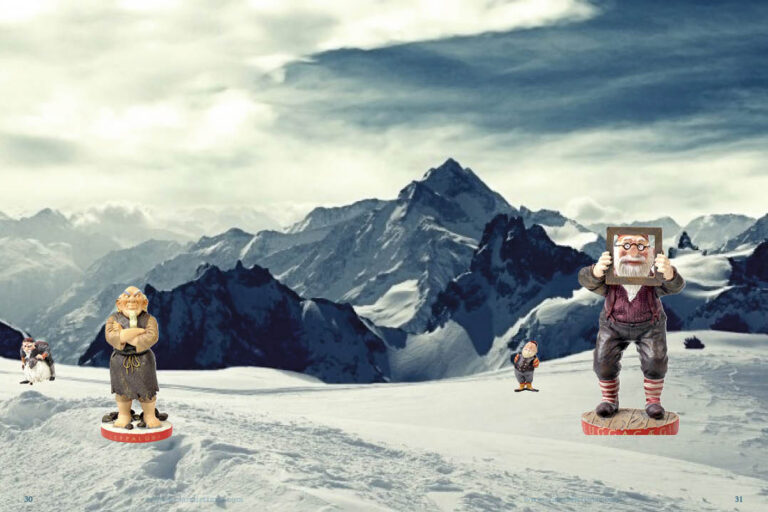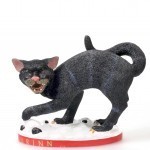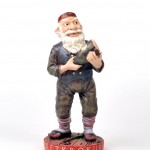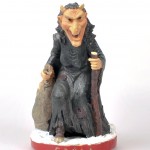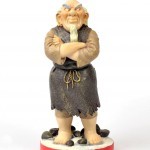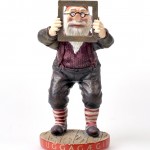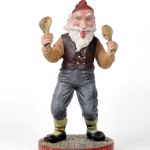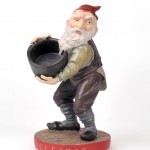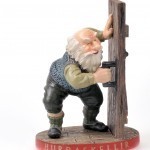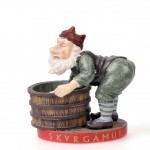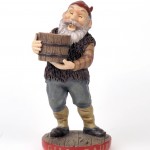Christmas is different in Iceland
Unlike most nations who have just one Santa Claus, Father Christmas or Sinterklaas, Icelanders have 13 Yule Lads. The oldest sources date from the 16th century and back then they were a far cry from the peace-loving and generous lads children believe them to be today.
Obey…or else!
Originally they were hideous tricksters who used to scare children. In fact, children were so scared of them that in late 17th century, the government of Iceland asked parents to stop using the Yule Lads to scare their children to obey. Slowly they became more and more benevolent until they became gift-giving and loving lads. However, it is possible to get a glimpse into their past just by looking at their names and closest family.
A shoe on the windowsill
On the eve of 12th of December, children put a shoe on their windowsill so the Yule Lads can give them a small present. They come down one by one from their home in the mountains, each night from the 12th to the 24th. Starting on the 25th of December, they begin their journey back home, with the last one leaving on 6th of January.
This tradition most likely originated in the Netherlands and was brought back by Icelandic fishermen in the 1930s. In the Netherlands, children put a wooden clog on their window sill for Sinterklaas on St. Nicholas’ Eve or 6th of December.
It is a tradition for parents to help the Yule Lads with the gifts and to begin with, only the wealthier parents could take part in this new tradition. Around 1960, when Iceland’s economy improved, the tradition became generally adopted. In the early days, there were no set rules people seemed to follow and some children got a small present every day in December until Christmas. Sometime before 1970 it became common knowledge that children should put their shoe out on the eve of 12th of December. The presents depend on the children behaving well – if they don’t, they risk receiving a raw potato instead.
Who are the Yule Lads?
Today the Yule Lads dress mostly like their American counterpart, Santa Claus, although they can sometimes be seen wearing their old, traditional Icelandic clothes. Their names are descriptive of their former trickster lifestyles.
Stekkjastaur or Sheep Cote Clod is the first to come. He harasses sheep and wants their milk. He has very stiff legs.
Giljagaur or Gully Gawk is the second. He hides in gullies waiting for an opportunity to sneak into the cowshed to steal milk.
Stúfur or Stubby is the third. He uses his small stature to his advantage and sneak into people’s houses. There he waits for an opportunity to steal the frying pan to eat the crusts left on it.
Þvörusleikir or Spoon-licker is the fourth. He steals þvörur (a ladle with a long handle) to lick. He’s extremely thin due to malnutrition.
[easymedia-carousel med=”17360″]
Pottaskefill or Pot-Scraper is the fifth. He steals leftovers from pots.
Askaskleikir og Bowl-Licker is the sixth. He hid underneath beds, waiting for people to put down their askur (an eating bowl with a lid), for their animals to lick out. But he licked it instead.
Hurðaskellir or Door-Slammer is the seventh. He loves to slam doors, especially during the night.
Skyrgámur or Skyr-Gobbler is the eighth. He has a great affinity for Skyr, the uniquely Icelandic dairy product.
Bjúgnakrækir or Sausage-Swiper is the ninth. He hides in the rafters of the house to snatch sausages while they are being smoked.
Gluggagægir or Window-Peeper is the tenth. He peeks through windows looking for things to steal.
Gáttaþefur or Doorway-Sniffer is the eleventh. He has a very large nose and a great sense of smell which he uses to locate laufabrauð (leaf bread, a Christmas delicacy).
Ketkrókur or Meat-Hook is the twelfth. He uses a hook to steal meat.
Kertasníkir or Candle-Stealer is the thirteenth. He follows children around to steal their candles. In the olden days they were made of tallow and were thus edible. Today he probably has a hard time finding something to eat.
Grýla is the Yule Lads’ mother. She eats children who are naughty! It is said she has died from hunger because children stopped being naughty but that has not been confirmed.
Leppalúði is the Yule Lads’ father and a bit of a loser. He is often said to be a bit slow and dim.
Finally, in addition, there is Jólakötturin or the Yule Cat, a ferocious beast that eats everyone, especially children, who don’t receive new clothes for Christmas.
If you want to take one or more of those outlandish characters home with you as a s souvenir, you can find those amusing statues in number of gift shops in the Reykjavik centre such as The Little Christmas shop on Laugavegur, Björk the tobacco store, bookshops, Rammagerðin and Iða to name just few.
| Auðbrekka 2 ◦ 200 Kópavogur,[email protected] sunfilm.is,tel: +354 552 9333 |

